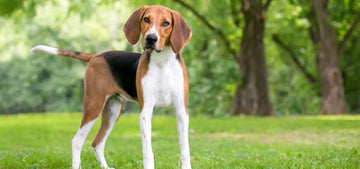
Our canine companions never amaze and intrigue us with their diverse and often puzzling behaviors. One such behavior, head shaking, usually leaves us pondering. These actions can be both endearing and concerning, from mild cramps to more pronounced shakes. In this article, we'll navigate the motivations behind our dogs' head-shaking behaviors.
1. Ancestral Ties: From Wild Predators to Playful Pets
Dogs, as we know them, have evolved from fierce wild predators. But some behaviors persist despite thousands of years separating them from their wild ancestors. The prey drive, for instance, remains strong in many breeds. When a dog grabs a toy and shakes it back and forth, they're unconsciously mirroring the motions their ancestors used to kill small prey. While it might seem like a playful gesture—and often it is—it's also a haunting reminder of their wild past, revealing the deep-seated instincts that linger beneath their domesticated demeanor.
2. Canine Conversations: Head Shaking as Communication
Our pets' reactions speak volumes about their feelings and perceptions. Dogs, being non-verbal creatures, rely heavily on body language to communicate. An abrupt head shake, for example, could be their way of reacting to an insect buzzing around their ears or a peculiar scent that caught their attention. By keenly observing the situations in which these behaviors manifest, we can better understand what our furry friends might be trying to convey, strengthening our bond with them.
3. The Symphony of Sounds: Tuning In and Out
A dog's hearing is far superior to ours, allowing them to pick up frequencies we can't even fathom. This auditory richness means they also get exposed to sounds that can be jarring or unsettling. Sometimes, when confronted with an unfamiliar or uncomfortable noise, a dog might shake its head as if trying to shake off the sound or adjust their internal "radio" to a more comfortable frequency. This is their intuitive way of handling sensory overload in a world bustling with sounds.
4. Emotional Transitions: Shaking Off the Overwhelm
Life, with its myriad experiences, affects dogs as profoundly as humans. There are moments of sheer joy, sudden scares, or unexpected disturbances that can momentarily throw them off balance. In such instances, a quick head shake can be their mechanism to "reset," helping them transition from one emotional state to another. Think of it as their way of taking a deep breath and moving forward.
5. Personal Maintenance: The Need to Feel Good
Dogs, like us, have personal hygiene habits and comfort routines. A good shake often follows activities that disrupt their physical comfort—like getting wet in the rain or rolling in the grass. This head shaking is a quick fix, throwing off excess water or realigning their fur, ensuring they remain comfortable. It's a simple yet effective self-care ritual emphasizing the importance of well-being in the animal kingdom.
6. Social Dynamics: Interaction and Assertion
Dogs are inherently social creatures, always seeking interaction with fellow dogs, other animals, or their beloved humans. As they engage in these social interactions, behaviors like head shaking might emerge as non-verbal communication. It could be a playful warning to another dog encroaching on their territory or a gentle way to communicate boundaries to over-enthusiastic humans. Understanding these social cues is crucial in promoting harmonious relationships between dogs and their surroundings.
7. Curiosity and Exploration: A Sensory Response
The world is a vast, sensory playground for our dogs. Every corner holds something new to sniff, see, or hear. As they navigate this constant barrage of stimuli, specific experiences might provoke unexpected reactions. Perhaps they've inhaled a powerful scent, or a gust of wind carried an unfamiliar sound. In such scenarios, a head shake acts as a reflex, helping them process these sensory surprises and continue their exploration with renewed curiosity.
8. Modern Solutions: Gotta Go Grass for Your Canine Needs
In our rapidly evolving urban environments, finding sustainable and comfortable solutions for our pets is crucial. Enter the Gotta Go Grass. Suppose you've ever found yourself exasperated with messy, odorous wee-wee pads or watched your dog's dismay at the prospect of stepping out during a torrential downpour. In that case, there's now a better solution. Have a Gotta Go Grass, designed with convenience and your dog's comfort in mind, offers actual grass pee pads. Not only does this provide a more natural feeling for your pet, but it's also a hygienic and odor-free alternative to traditional potty solutions. The best part? This isn't just any grass. Every pad is crafted from natural grass, cultivated with care on a family-owned farm. So, you're not just getting a product but investing in a piece of nature tailored to your dog's needs. Whether you're at work or want an indoor potty option for those unpredictable weather days, Gotta Go Grass ensures your dog has a reliable spot. Make the switch and experience the difference. Your furry friend will thank you!

Decoding vs. Diagnosing: Behavioral and Medical Implications
While our primary focus is understanding the behavioral intricacies of head shaking, it's paramount for dog caregivers to discern between quirks and genuine health concerns. If head shaking becomes unusually frequent or is paired with other worrying signs like ear scratching, whimpering, or imbalance, it's crucial to consult a veterinarian. It could hint at underlying medical issues that demand prompt attention.
In all their spirited complexity, dogs constantly offer insights into the primal and the profound. As we delve deeper into understanding each gesture, twitch, or shake, we unravel the mysteries of their behavior and fortify the bonds we share with these loyal companions. Remember, a well-observed behavior can be a window into a dog's soul and a signpost pointing to their needs.




